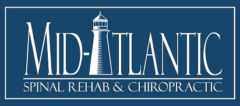When you are dealing with a newborn baby, this child can have various complications during childbirth. These various complications can be as simple as a natural birth, which can lead to their spine getting misaligned. When a child’s spine is misaligned they may develop asthma, they may have digestive problems and difficulty breast-feeding which can hinder their development and worry you. However a chiropractor such as the ones available at Mid Atlantic Spinal Rehab &
For those living with incontinence, a meal can make the difference between a good day and a bad one. Seniors and home health aides alike can find themselves strategizing the foods and liquids to promote healthful urination. If you are living with incontinence, are eight foods to avoid! Coffee Although it has become the breakfast drink of choice, coffee is also a diuretic. In effect, this means that the caffeine within the beverage effectively siphons
Physical therapy Bowie, MD Sometimes, accidents happen in life, which can end up causing neck damage, spinal and back injuries, and more. Some examples of misfortunes that could cause such ailments are as follows: pedestrian accidents, vehicle or motorcycle accidents, slipping and falling, and more. Moreover, if left unattended, injuries can become permanent and/or irreversible. With that said a chiropractor in Bowie, MD, can aid in assisting with injuries caused by accidents. Physical therapy Bowie,
There are many different things that physical therapists are trained to do. You will likely not do everything that he or she knows how to do, but your PT will create a special treatment plan for you in particular to help with any ailments you are having. If you need physical therapy in Baltimore, MD, like physical therapy from Mid-Atlantic Spinal Rehab & Chiropractic, you should reach out to a PT office today to set
Unfortunately, many Americans suffer from chronic knee pain. The good news is, though, that doctors have worked tirelessly for decades to solve these issues. If you have any kind of knee pain, it is important to speak with a knee pain doctor, as soon as possible to find a good set of things to help relieve your pain. Here are some of the most common suggestions a doctor may give to people with chronic knee

